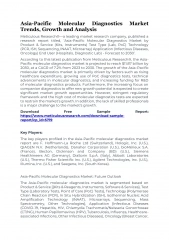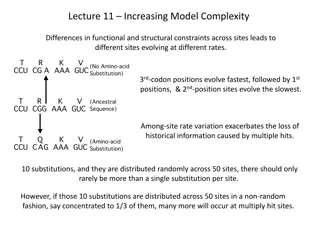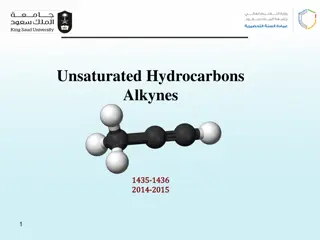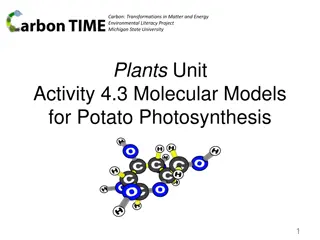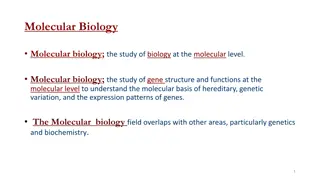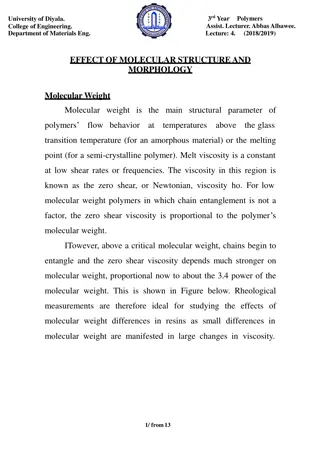
Challenges and Research on the Pig Industry in Cameroon
The pig industry in Cameroon faces challenges including lack of organization among farmers, absence of certified facilities, high disease pressure, and high feed costs. The sector is affected by diseases such as African Swine Fever (ASF), leading to efforts in research and containment. Studies focus on ASF prevalence, knowledge of breeders, and genetic characterization of the virus in different regions of Cameroon.
Download Presentation

Please find below an Image/Link to download the presentation.
The content on the website is provided AS IS for your information and personal use only. It may not be sold, licensed, or shared on other websites without obtaining consent from the author. If you encounter any issues during the download, it is possible that the publisher has removed the file from their server.
You are allowed to download the files provided on this website for personal or commercial use, subject to the condition that they are used lawfully. All files are the property of their respective owners.
The content on the website is provided AS IS for your information and personal use only. It may not be sold, licensed, or shared on other websites without obtaining consent from the author.
E N D
Presentation Transcript
Size and importance of the pig industry Cameroon: Alow-income country in Central Africa Estimated population of over 25.8 million inhabitants % of households are involved in agriculture 1/3 Proportion agriculturalists involved in pig farming: 23.3% Has thelargest pig population in Central Africa (Over 3.2 million pigs) Anual contribution in meat production in Cameroon: 34.556 tons Pig production in Cameroon is currently estimated to be 2.02 kg/person lower than the expected 5 kg/person because of numerous diseases (e.g. classical swine fever, swine erysipelas, porcine encephalomyelitis, Pasteurellosis, salmonellosis, ASF etc.) plaguing the livestock industry. 2
Situation of the ASF in Cameroon The first-ever ASF outbreak in Cameroon was in 1982 and since then the country has become endemic with a yearly resurgence of the disease The Ministry has instituted strict sanitary measures and contingency plans to fight against this deadly porcine disease These measures include: Reinforcement of epidemiological surveillance in collaboration with the regional delegations for livestock with the national territory Active control on transportation of pigs from one zone to the other Sensitization and training of different actors within the pig sector Sanitary and serological control of pigs from neibouring countries at the different sanitary checkpoints Active involvement of different zootechnical centres in control 3
Key challenges faced? Pig farmers are barely organized which doesn t help when aiming to build up proper marketing channels Certified slaughter or processing facilities are absent No guarantee quality meat No space reserved for pig market Each farmer searches his/her own way for marketing his meat, Therefore each producer is organised as he/she sees fit. Minimum of organised trade with neighbouring countries High feed costs High disease pressure 4
ASF research Distribution of ASF between 2010 and 2017 in the Adamawa, North, and Far North regions of Cameroon (2021) by the Department of Animal Production Technology, College of Technology, University of Bamenda, Bambili, Cameroon. Determine the knowledge, skills and practices at risk of pig breeders; the prevalence of the disease in piggeries; the genome of the circulating virus (2020 ) School of Veterinary Medicine and Sciences, University of Ngaound r . Molecular Characterization of ASFV in infected Pigs in Production Regions in Cameroon (2022) by the University of Buea in collaboration with the KU Leuven. Genetic characterization of African swine fever virus in Cameroon, 2010-2018 (2019) by the Department of Microbiology, University de Yaound I, Yaound , Cameroon. 5
Title:Molecular Characterization of ASFV in infected Pigs in Production Regions in Cameroon Presenter: Stephen M. Ghogomu Country and institution: University of Buea, Cameroon 6
ASFV in Cameroon: What's known Genotype I present Sub group Ia and Ib Three mainly variants A, B and C ASFV (Domestic cycle) Ebwanga et al. 2021 7
Introduction Many farmers practice free range pig farming: pigs are kept outdoors for their entire life. This system exposes pigs to various pathogens, including ASFV through contact with neighboring domestic pigs or wild reservoirs Existence of transboundary movement of live pigs and their products between neighbouring countries through pig trade It is therefore necessary to identify and characterize: ASFV strains circulating in Cameroon ASFVs responsible for new outbreaks and track the disease origin 8
Objective To detect and characterize ASFV genetically in domestic pigs suspected to be infected with ASFV from pig production regions in Cameroon. Findings will: improve knowledge on the molecular epidemiology of ASFV in Cameroon Provide additional information for the development of control strategies 9
Ethical statement Ethical approval : University of Buea Institutional Animal Care and Use Committee (UB-IACUC) Regional authorizations: Regional delegations of the different Regions Consent: Blood was collected only from the pigs of farmers who gave consent for the study The collection was performed following a standard protocol for jugular vein blood collection in pigs 10
Study Area Statistics on 377 samples collected Region (4) Number of Samples Collected Collection Site Division Farm Location or Slab Total Southwest Fako Mile 16 Buea 24 Slaughter slabs (blood and tissue samples) Liottoral Moungo Grand Hanger market (Bonaberi) 22 100 `Buea Misselleleh 30 24 Southwest Outbreak collection Fako Wouri Bonaberi 15 Littoral 37 Moungo Souza 22 Buea 69 Southwest Fako Limbe 26 143 Misselleleh Area 48 From pig farms (Blood only) Mifi Baffousam 8 West Koung Khi Baham 4 20 Bandjoun 8 Mezam Bafut 22 Northwest 77 Santa 55 11
Methodology DNA Extraction from blood of sick pigs Target gene amplification Detection of virus: presence of the p72 viral capsid protein (257bp band) 120 positives out of 377 samples prevalence of 31.83% Genotype detection: B646L gene (C-terminal) codes for the p72 viral capsid protein (478bp)` CP204L gene encoding the P30 protein (543bp fragment) Subgroup identification: E183L gene codes for the p54 viral inner membrane protein (676bp) Variant determination: B602L codes for the CVR (358bp) I173R and I329L intergenic region Sequencing of the polymorphic loci Genomic analyses: Comparison of seqs from Cameroon and from Genbank 12
Genotpe determination: Gene Phylogeny: Gene Cluster (%) No clustering (%) 0 0 Remark B646L (P72) E183L (P54) Genotype I (100) Genotype Ia & Ib (100) Previous results Previuos results CP204L (P30) Genotype I (41.2) 58.8 Mostly from Miselele (Exortic breeds) 13
Variant determination: Intergenic region (I73Rand I329L) Phylogeny: One variant (One repeat) 1 3 2 Never effected in Cameroon 1 Single GGAATATATA repeats 14
Genotpe determination: BL602L Phylogeny of the CVR: (2 variants: 6 and 9 repeats) A = CAST KKK = NLHAQSAYT 19 B = CADT, CTDT YYY = EYTDLTDPERIP D =CASM F = CANT, CAAT Previous results in Cameroon C = GAST, GANT N = NVDT, NVGT Three variants with 19, 20 and 21 repeats O = NANI, NADI, NASI V = NAST, NAVT, NANT, NADT S = SAST H = RAST a = CVST , CTST, CASI T = NVNT 6 L = YNTN J = GTDT LHAQSAYTCASTCADTNVDTCASTCASTCASTCASTGASTCADTNVDTCASTCADTNVNTCASMCADTNVDTCASTCANTFKHRSR 15 Repeats = ABNAAAACBNABTDBNAF
Serogroup determination: Most isolates had 7 PPPKPC repeats one with 5 repeats and a few with 6: Serogroup IV Previous results in Cameroon Sero-group I (effected in 1989) 8 serotypes known 16
Summary of results Prevalence : 31,85% Molecular characterization Previous results in Cameroon Genotype I Genotype I Subgroup Ia Subgroup Ia and Ib CP204L gene : 41.2% into genotype I and 58.8 out Never effected Two variants : 19 and 6 repeats Three variants with 19,20 and 21 Sero-group I: 97.30% ( 7 PPPKPC repeats) Sero-group I I173R and I329L : Single GGAATATATA repeat (One variant) Never effected 17
Conclusion There is need for persistent molecular characterization to: i). Improve knowledge on molecular epidemiology of ASFV in Cameroon ii). Provide additional information for the development of control strategies 18
Thank you for your Kind attention 19
What is your vision for the swine sector in your country for the next 5 years/10 years? Research into vaccine development either attenuated or sub-unit vaccines must have been developed The search for host genes related to protection in the case of the local and the wild suids must have been developed Strategies must have been developed to track outbreaks especially when they are not reported The transfer of sera from the recovered local or exotic breeds to nai ve animals. 21
What are your 3 5 expectations from this ASF GAP Analysis? The meeting is well organized I should be able to learn new research ideas on the control of ASF Establishment of new research collaborations and teams Scrupulous time management 22

